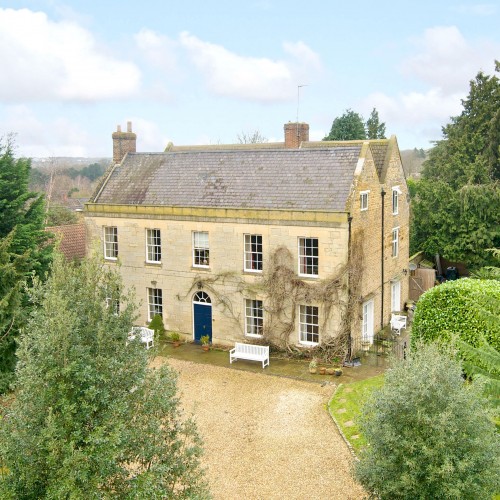A Rectory sits at the top of the parish pile as in days gone by it was the rector who ran the parish and collected tithes. The Rectory reflected the importance of the rector so tended to be a grand building with land. In those days the rector had a vice-rector, aka the vicar, and their lesser role meant they were given a smaller property. Their Vicarage could have been anything from a cosy cottage to a manor house. Most Rectories and Vicarages were built during the Georgian and Victorian eras and the word ‘parsonage’ is used to describe both.
Rectories and Vicarages have a timeless appeal and for many country house buyers are the stuff of dreams. Here are just some of the reasons why a parsonage is considered a perfect family home:
- People love the quintessentially English address. This romantic and aspirational quality makes a parsonage unlikely ever to fall out of fashion, even in a market downturn. Plus, there is only ever one Rectory in a village which guarantees a status that other houses don’t have. Buying a Rectory for sale is one of the safest bets you can make in the housing market. Priced correctly, they are recession-proof properties.
- Location, location, location. Rectories have a central location within a village and almost all enjoy a view of the church. Not only does that bestow a zen like quality on G&Ts in the garden, but being close to the most architecturally important building in the village means that the surrounding area is protected to some extent from development.
- Well-proportioned rooms. Originally designed to welcome and accommodate visiting parishioners, most rectories will have generous-sized entertaining rooms. Entered via a hallway, they will typically open into four large, high-ceilinged reception rooms ideal for hosting a good number of people, and six or seven bedrooms upstairs. The acre or two of gardens suitable for throwing village parties also gives plenty of space for adding a pool or tennis court.
- Bi-fold doors are a watchword in interior design with light, bright houses all the rage. Georgian rectories are solid architectural structures but they have large windows and high ceilings relative to other period properties such as cottages or manor houses.
- Merging of old and new. Buyers fall in love with the period details like the window shutters and cornicing but don’t have to compromise on modern day essentials like a contemporary kitchen and bathrooms.
- Literary style and substance. Not designed to be showy or impress, these houses were created for comfort and sociability, something that appealed to the characters in Jane Austen’s novels, such as Catherine Morland in Northanger Abbey, for whom “there was nothing so charming in her imagination as the unpretending comfort of a well-connected parsonage”. The rectory is central to many of Austen’s books, and the author herself grew up in one as did John Betjeman, Alfred Lord Tennyson, A A Milne and the Brontë sisters.
- Village setting. Rectories were designed to be easily accessible to the vicar’s parishioners so rather than being hidden away at the end of a long drive like the elitist manor house, they sit on the edge or at the centre of the village, ideally placed for people to pop in. Their central village location is just one of many reasons why we all love a rectory.
If you dream of living the rural idyll in a traditional country house, why not check out the Michael Graham period homes we have listed for sale? Click the Property search button now to reveal all our homes to buy or to rent, including the three period properties below.
